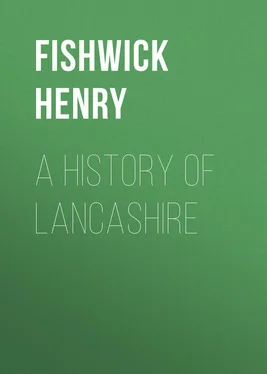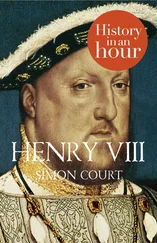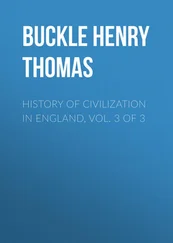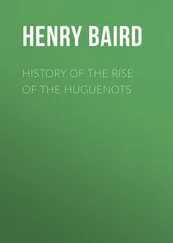Henry Fishwick - A History of Lancashire
Здесь есть возможность читать онлайн «Henry Fishwick - A History of Lancashire» — ознакомительный отрывок электронной книги совершенно бесплатно, а после прочтения отрывка купить полную версию. В некоторых случаях можно слушать аудио, скачать через торрент в формате fb2 и присутствует краткое содержание. Жанр: foreign_antique, foreign_prose, на английском языке. Описание произведения, (предисловие) а так же отзывы посетителей доступны на портале библиотеки ЛибКат.
- Название:A History of Lancashire
- Автор:
- Жанр:
- Год:неизвестен
- ISBN:нет данных
- Рейтинг книги:4 / 5. Голосов: 1
-
Избранное:Добавить в избранное
- Отзывы:
-
Ваша оценка:
- 80
- 1
- 2
- 3
- 4
- 5
A History of Lancashire: краткое содержание, описание и аннотация
Предлагаем к чтению аннотацию, описание, краткое содержание или предисловие (зависит от того, что написал сам автор книги «A History of Lancashire»). Если вы не нашли необходимую информацию о книге — напишите в комментариях, мы постараемся отыскать её.
A History of Lancashire — читать онлайн ознакомительный отрывок
Ниже представлен текст книги, разбитый по страницам. Система сохранения места последней прочитанной страницы, позволяет с удобством читать онлайн бесплатно книгу «A History of Lancashire», без необходимости каждый раз заново искать на чём Вы остановились. Поставьте закладку, и сможете в любой момент перейти на страницу, на которой закончили чтение.
Интервал:
Закладка:
CHAPTER VI
THE NORMANS AND THE PLANTAGENETS (A.D. 1066–1485)
The stirring events which led up to the battle of Hastings, which took place on October 14, 1066, and the subsequent complete conquest of England by William of Normandy, did not perhaps immediately affect the Northern part of the kingdom so much as they did those counties lying nearer the scene of action.
We have now arrived at a period when we have more definite and reliable evidence as to the actual position of Lancashire.
At the end of the year 1084 the King summoned his Great Council to meet at Gloucester, with the object of devising means whereby a full account could be obtained as to the state of the country, especially as to the land – how much was cultivated, and by whom and on what authority it was held. This is not the place more fully to describe the modus operandi of preparing the Domesday Book, but it may be mentioned that by some singular arrangement Lancashire as a county is not named, the southern portion being included in Cheshire, the hundred of Amounderness in Yorkshire, and the two northern hundreds in Westmorland, Cumberland, and Yorkshire. The value of the information contained in the return is threefold, as it records the state of the country in Edward the Confessor’s time, the way each manor, etc., was dealt with by William on his taking possession, and the rateable value on the taking of the Survey.
Unfortunately, we do not get from it anything like a census of the whole country, but it will be useful for comparison to note that Yorkshire had about 10,000 inhabitants, London some 30,000, and that of the other counties Lincoln and Norfolk had the largest population. The Survey was taken in A.D. 1085.
In West Derby Hundred the following places are named 56 56 In the original document the names are often very different to the ones now in use, but they have all been identified as referring to the localities above given.
as places where there was land under such cultivation or occupation as to render it rateable: Roby, Knowsley, Kirkby, Maghull, Aughton, Huyton, Torbock, Toxteth, Sefton, Kirkdale, Walton–on–the–Hill, Litherland, Ince Blundell, Thornton, Meols, Little Woolton, Smithdown (now Liverpool), Allerton, Speke, Childwall, 57 57 “There is a priest there having half a carucate of land in frank amoign.”
Windle, Much Woolton, Wavertree, Bootle, Formby, Ainsley, Down Hollard, Dalton, Skelmersdale, Raven’s Meols, Orrell, Lathom, Hurleston (in Scarisbrick), Melling, Lydiate, Altcar, 58 58 Said to be waste.
Barton, Halsall. At this time Lancashire between the Ribble and the Mersey was divided into six hundreds, viz., West Derby, Newton, Walintone ( i. e. , Warrington), Blackburn, Salford, and Leyland. The places just named, with the addition of Newton and Warrington, are all that were recognised in the Great Survey, and many of these were manors held in the time of Edward by Thanes whose names are not given; others were doubtless in the hands of Saxons, Danes or Anglo–Saxons, who had stuck to their holdings through all changes. Some of the surnames at once suggest this; for example, we find Godiva, the widow of Leofric, Earl of Mercia, returned as having three carucates of land in Melling. Amongst the other tenants in capite are Dot, Uetred, Chetel, Wibert, etc. Edward the Confessor had in West Derby one manor and six berewicks (sub–manors), a forest 3 miles long and 1½ miles wide, 59 59 Other forests are named at Latham, Aughton, Milling, Lydiate, and other places.
and an aerie of hawks. The whole of the land between the Ribble and the Mersey had been given to Roger de Poictou as a reward for his services to the Conqueror, but was forfeited to the Crown shortly before this date. All the manors were rateable to the danegeld, but fifteen of them paid nothing to the royal exchequer except that geld. The customary tribute for the manors was two hora or ores of pennies for each carucate of land; 60 60 The hora was not a coin, but an equivalent for about 1s. 6d. or 1s. 8d.
the owners of the manors had also to assist in making and keeping up the King’s houses, fisheries, hays, and stations in the forest; they were also to find mowers to reap the King’s corn, to attend the hundred court, and do other small services, under certain fixed penalties for omission.
Roger de Poictou had granted land here to eight men, whose holding was twenty–four carucates, and they had forty–six villeins, one radman, and sixty–two bordarii , two serfs, and three maids. Their wood was 4½ miles long. The bordarii at this time formed about thirty per cent. of the entire population; their exact status has never been very clearly defined. They were probably identical with the cotarii , and were a class somewhat above the villeins and servi , and were allowed a bord or cottage, and rendered occasional service to the demesne lord.
In Newton fifteen berewicks were held by as many men, who were described as drenchs or drings , who were a kind of military vassals, holding allotments as minor or sub–manors. The service they gave was known as drengage . The manor had a church (Wigan), and St. Oswald’s (Winwick) had two carucates of land. Some of the manors had curious exemptions from penalties; for example, Orrel, Halsall, and Tarleton were not liable to forfeiture through their owners committing murder or rape. The Warrington manor had been held by King Edward, who had allotted land to thirty–four drenchs . St. Elfin (Warrington) was free from custom except geld. In the whole of this division of the county we have no towns, cities, or castles, and five churches are mentioned in Childwall, Walton–on–the–Hill, Winwick (Newton), Wigan, and St. Elfin (Warrington).
Concerning the hundred of Blackburn, the information given in the Domesday Book is comparatively meagre. This portion of Roger de Poictou’s vast possession had, before he fell into royal disfavour, been given by him to Roger de Busli and Albert Greslet. Edward the Confessor held Blackburn, where there were two hides and two carucates 61 61 In South Lancashire it is believed that six carucates made a hide. A carucate was about 100 acres, but was a variable term.
of land; there was a wood 1½ miles long, and the usual aerie of hawks. To this “hundred or manor” were attached twenty–eight freemen, who held land for twenty–eight manors, and there was a forest 9 miles long. In the same hundred King Edward held Huncote and Walton–le–Dale. The church of Blackburn and St. Mary’s, Whalley, also held land. The whole manor with the hundred yielded the King a farm rent of £32 2s. Leyland Hundred Edward the Confessor found to consist of Leyland Manor, which contained a hide and two carucates of land, and a wood 3 miles long, 1½ miles broad, with the customary aerie of hawks; to it belonged twelve other manors, with woods 9 miles long and over 4 miles wide. The men of this manor were not bound to work at the King’s manor–house, or to mow for him in August. They only made hay in the wood. 62 62 This will serve as a proof that foresta (= a wood or forest) was not necessarily a dense mass of trees, but rather a place where game of every kind abounded.
The whole manor paid to the King a farm rent of £19 18s. 2d. The tenants named are Hirard, Robert, Radulph, Roger, and Walter, and there were four radmen, a priest, fourteen villeins, six bordarii , and two neat–herds. Part of the hundred was waste. Edward also had in this hundred Penwortham ( Peneverdant ), where for two carucates of land 10d. was paid, and it is briefly recorded that there was a castle there ( see p. 47).
Интервал:
Закладка:
Похожие книги на «A History of Lancashire»
Представляем Вашему вниманию похожие книги на «A History of Lancashire» списком для выбора. Мы отобрали схожую по названию и смыслу литературу в надежде предоставить читателям больше вариантов отыскать новые, интересные, ещё непрочитанные произведения.
Обсуждение, отзывы о книге «A History of Lancashire» и просто собственные мнения читателей. Оставьте ваши комментарии, напишите, что Вы думаете о произведении, его смысле или главных героях. Укажите что конкретно понравилось, а что нет, и почему Вы так считаете.












